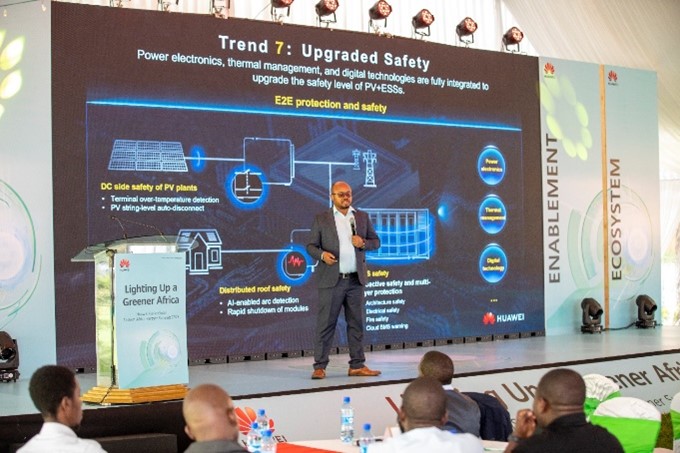With Kenya’s installed capacity has tripled over the last three years, Huawei Digital Power Kenya has released its latest report on the top ten trends that the firm considers through research will drive the growth of the solar energy industry in the near future.
Remarkably, power generated from solar panels is projected to constitute half of the total amount of electricity consumed in the foreseeable future as it moves up the ranks to become one of the primary renewable energy sources.
According to the Smart PV Top 10 Trends report, solar is also poised for high growth momentum that will see it replace fossil fuels such as coal and heavy fuel oil in power generation by the year 2050.
The report, which outlines several expected scenarios for the growth and development of the solar power industry, was released during the Huawei Digital Power Partner Summit held in Nairobi.
Speaking when he shared findings of the report, Victor Koyier, Huawei Vice President for Southern Africa Digital Power Smart PV, explained that solar is an evolving technology that is expected to go through more iterations with time and by 2027 will constitute 60 per cent of renewable energy installations.
“We have witnessed an exponential growth in the demand for solar energy globally, across the African continent and even here in Kenya,” said Koyier. In the first half of 2023, he noted that demand for solar was already 20 per cent higher compared to a similar time last year.
Over the years, progressive government policies and technological advancements have elevated its reliability, with the focus now shifting to the efficacy of the storage packs and the increasingly hostile environments in which the equipment is being installed. This includes the establishment of solar farms which will deliver electricity to national or local grids.
Extremely harsh conditions such as high salt mist, high temperature, high humidity and sandstorms have tested solar equipment, with engineers noting that as the future unfolds, more installations will be in commercial and industrial facilities and residential homes, which are expected to be fitted in varied environments.
These technological advances, said Koyier, are driven mainly by innovations in energy storage, aesthetics and inbuilt mechanisms that enable remote operational notifications.
The report notes that the solar industry is expected to deepen its focus on equipment security, with aspects such as digital signatures, safety from external attacks and central management of digital certificates gaining prominence among the key players.
Light Air craft crashes in Kisumu
New-age technologies that include 5G, IoT and cloud will be integrated into solar installations to provide real-time intelligence, collaborate with other equipment and deliver reports and information efficiently.
The report also tackles the enablement of Artificial Intelligence, which is expected to play a quality control role, intelligently sorting out the various equipment that comprises the system and allocating each to deliver optimal functionality. On battery technology, there will be AI to warn people about the issues with the battery.








